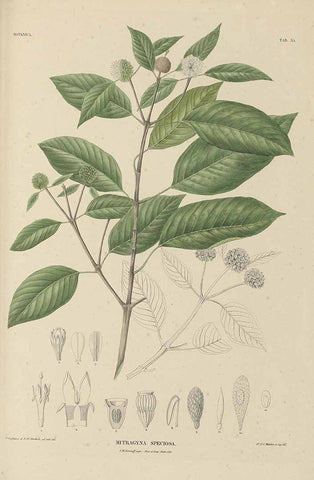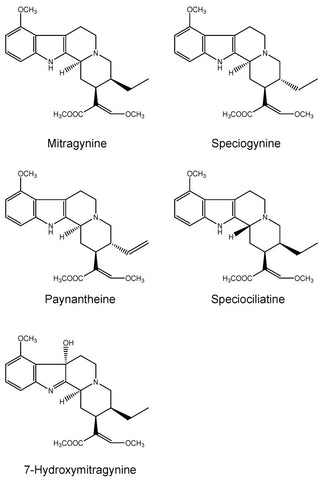What is Kratom?
Kratom In a Nutshell
Kratom is the common name for Mitragyna speciosa, a group of evergreen trees native to Southeast Asia that belong to the Mitragyna genus of the Rubiaceae family, the same family as the coffee tree. So, wait, if the tree is Mitragyna speciosa, why do we call the herbal supplement “kratom”? The term, “Kratom”, comes from the word Thai people use for the herb, Kra-thum. The Malaysian word for Kratom sounds something like ketum and has numerous variations throughout Southeast Asia.

The Kratom tree grows wild in Thailand, Malaysia, Indonesia, Myanmar, Vietnam, and other areas in the Pacific Rim. Known for its hanging clusters of deep yellow flowers and reaching up to 42 feet in height, kratom has been used for centuries as an herbal supplement in Southeast Asian folk medicine and was particularly popular among men who worked physically demanding jobs and enjoyed the natural energy boost and comfort the herb promoted.
Kratom leaves are used for their complex subjective effects. Low to moderate amounts (1-5 g) of the leaves reportedly produce mild stimulant effects that help to stave off fatigue. Moderate to high doses (5+ g) are reported to have calming effects. According to an American survey, even low doses do a great job at promoting a reduction in physical discomfort.
As far as we currently know, the main psychoactive components in the leaves are the alkaloids mitragynine and 7-hydroxymitragynine(7-HMG) both found only in M. speciosa. Besides these key psychoactive alkaloids, there are more than 40 compounds in M. speciosa leaves, including about 25 alkaloids other than mitragynine and 7-HMG, including ajmalicine, mitraphylline, mitragynine pseudoindoxyl, and rhynchophylline. More exciting scientific research is currently underway to better understand M. speciosa and its alkaloids, but, from what has been found thus far, we can see that Kratom is a marvelous and fascinating plant.

When hearing of Kratom’s psychoactive alkaloids, some folks’ alarms might sound, so to be clear: Kratom is not an opiate, nor is it a synthetic drug. Naturally occurring Kratom is a safe psychoactive herbal supplement that behaves as a partial mu-opioid receptor agonist and is used for a number of its subjective affects. Kratom contains no opiates, but it does bind to the same receptor sites in the brain. Chocolate, coffee, exercise and even human breast milk hit these receptor sites in a similar fashion, and, even after at least two centuries of Kratom use, there hasn’t been one death due to natural Kratom use reported in Southeast Asia.
This product is not intended to diagnose, treat, cure, or prevent any disease or condition.
